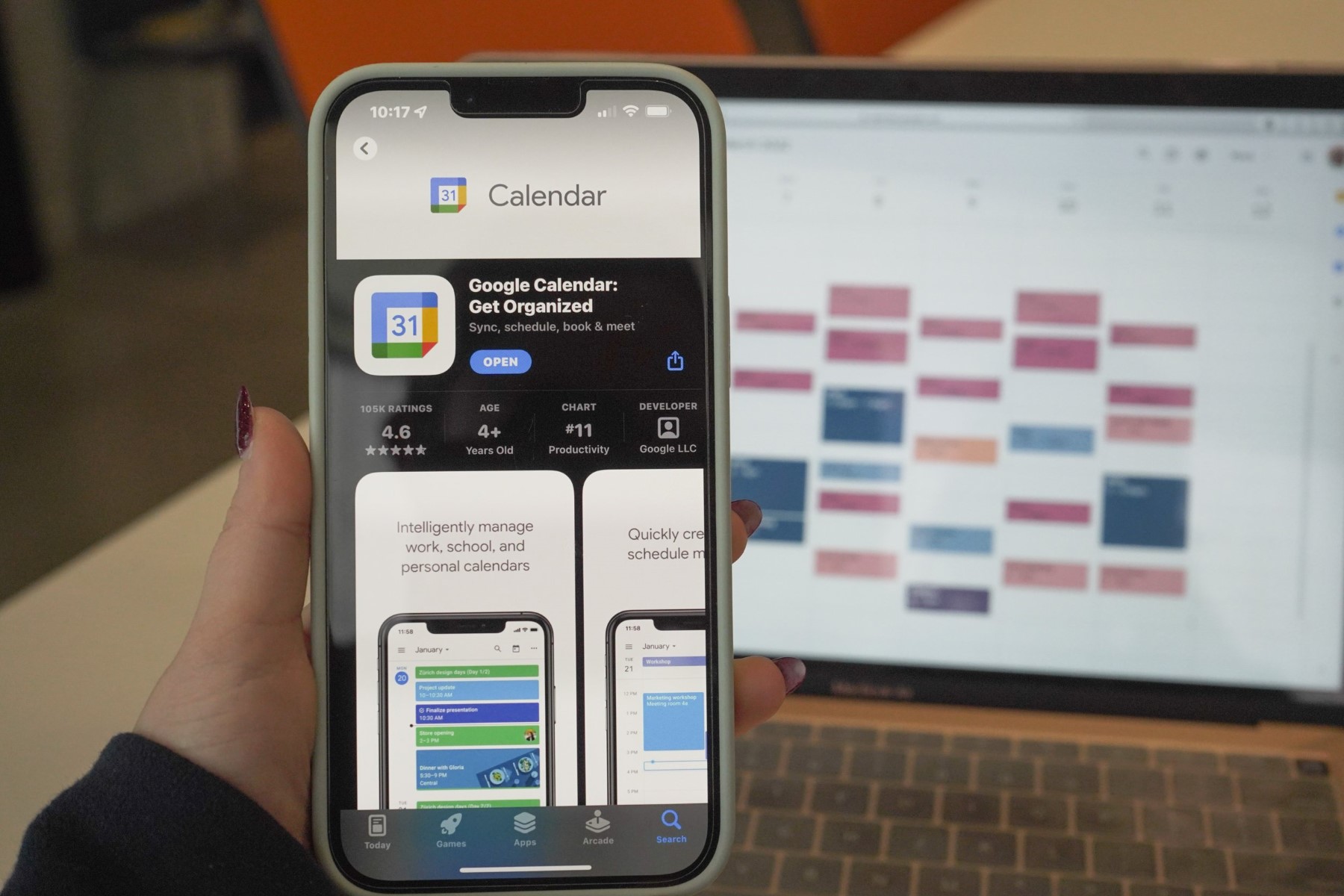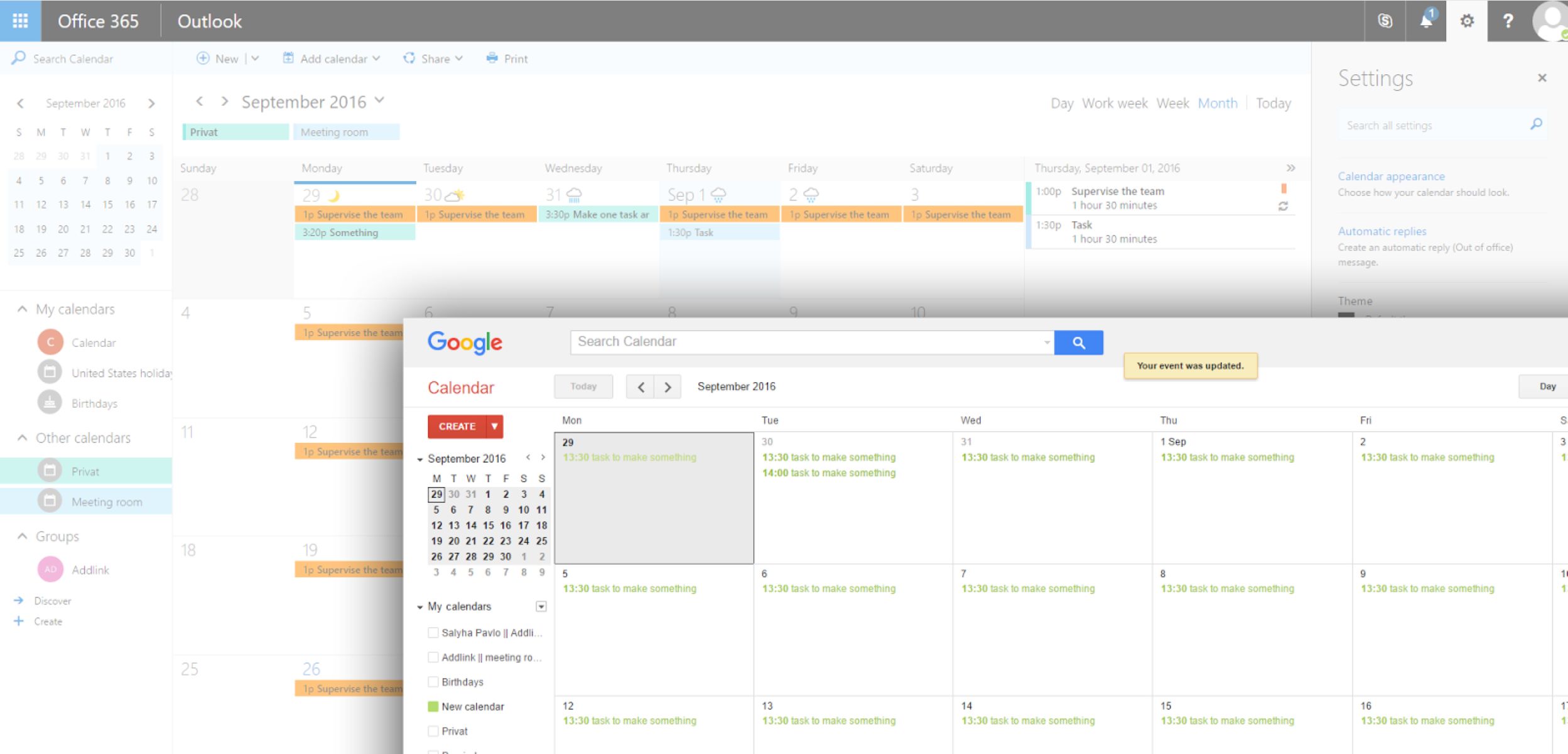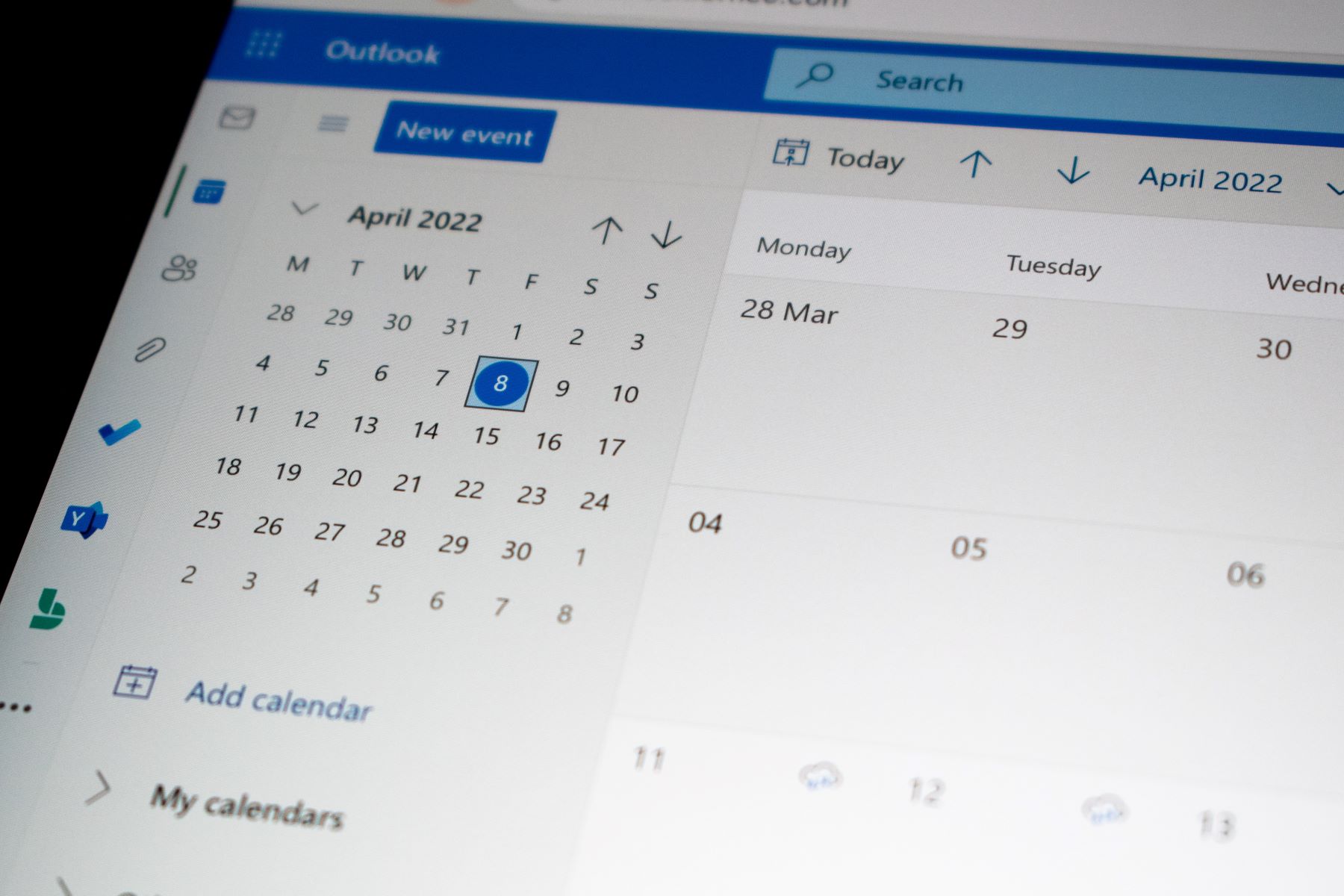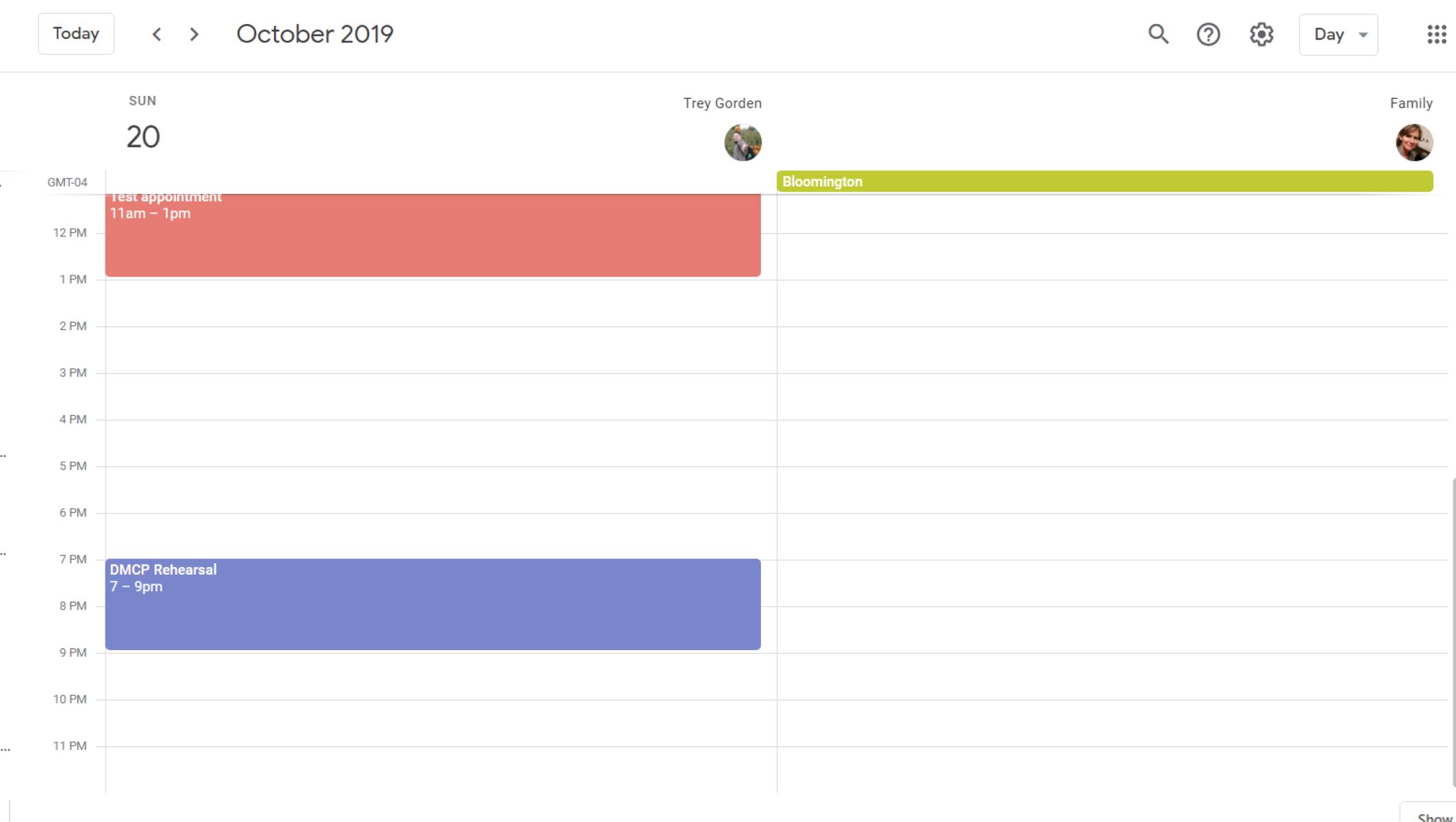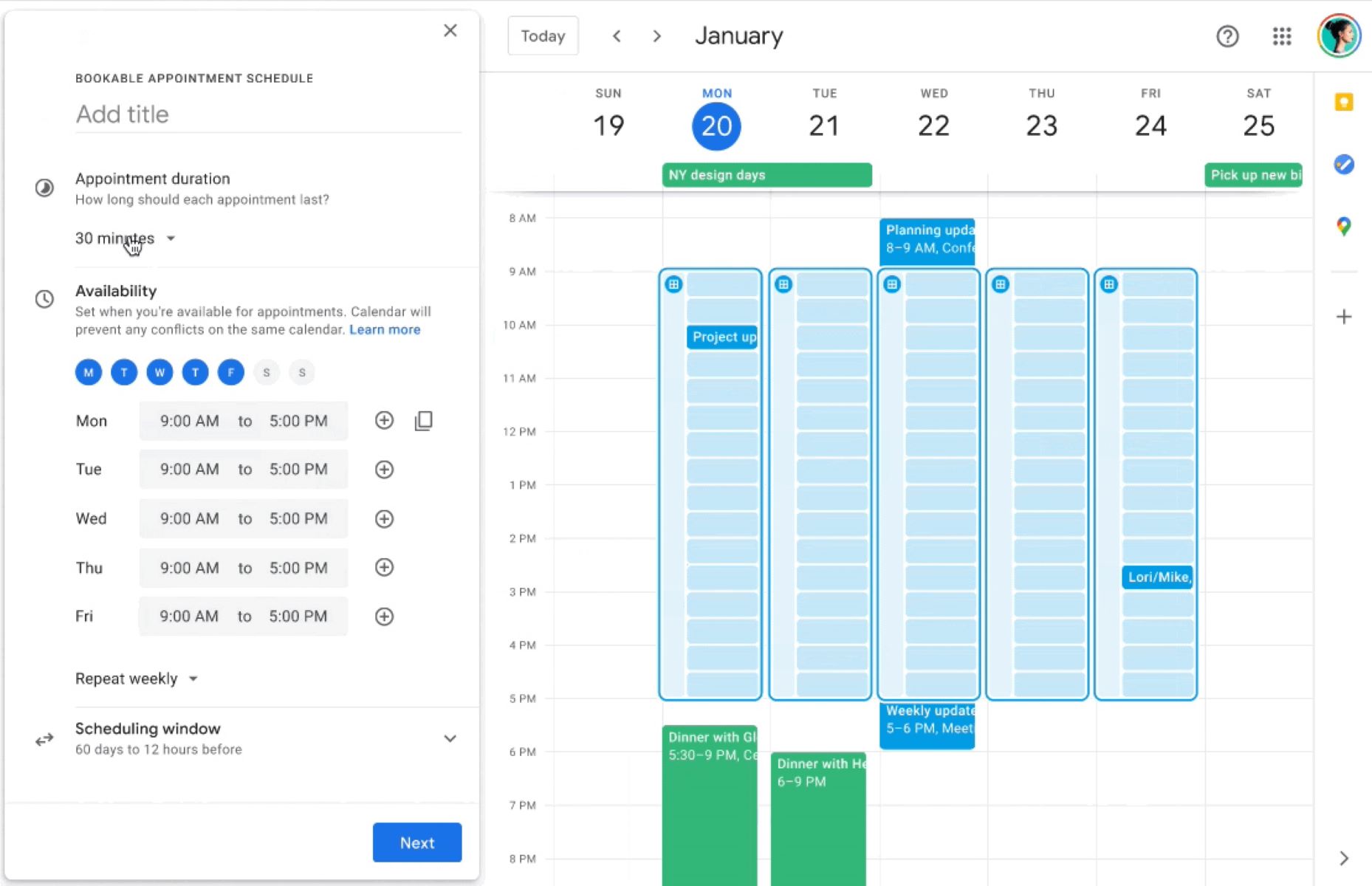Introduction
Sharing calendars between different platforms can be quite beneficial, especially when it comes to managing your schedule effectively. With the increasing popularity of Google Calendar and Outlook, finding a way to share a Google Calendar with Outlook users is essential for seamless collaboration.
By following a few simple steps, you can easily share your Google Calendar with Outlook and ensure that everyone involved can stay up-to-date with important events and appointments. Whether you’re working on a project with colleagues or simply want to share your personal calendar with family and friends, this guide will walk you through the process.
In this article, we will explain the step-by-step process of sharing a Google Calendar with Outlook. We will cover exporting the Google Calendar, importing it into Outlook, syncing the calendar, and managing the shared calendar within the Outlook platform. So, let’s dive in and explore how to seamlessly share a Google Calendar with Outlook users!
Before we begin, it’s worth noting that the following instructions assume you have a Google account and Microsoft Outlook installed on your computer. If you haven’t already set up these accounts, take a moment to do so before proceeding.
Now that you’re all set up, let’s move on to the first step: exporting the Google Calendar.
Step 1: Exporting the Google Calendar
Exporting your Google Calendar is the first step in sharing it with Outlook. This process creates a file that can be imported into Outlook, allowing you to view and manage the calendar within the Outlook platform. Here’s how you can export your Google Calendar:
- Open your Google Calendar and log in to your Google account.
- Navigate to the left-hand sidebar and find the calendar you want to share. Click on the three vertical dots icon next to the calendar’s name.
- In the dropdown menu, select “Settings and sharing.”
- Scroll down to the “Integrate calendar” section and look for the “Export” option.
- Click on the “Export” button, and a file will download to your computer. This file contains the calendar data in iCalendar format (.ics).
Once you have successfully exported your Google Calendar, you are ready to proceed to the next step: importing the calendar into Outlook.
It is important to note that this export process creates a snapshot of your calendar at that particular moment. If you make changes to your Google Calendar after exporting it, you will need to re-export the calendar file to ensure that Outlook reflects the most recent updates.
Now that you have exported your Google Calendar as an .ics file, it’s time to move on to the next step: importing the calendar into Outlook.
Step 2: Importing the Google Calendar into Outlook
After exporting your Google Calendar, the next step is to import it into Outlook. This will allow you to access and manage the calendar within the Outlook interface. Here’s how you can import the Google Calendar into Outlook:
- Open Microsoft Outlook on your computer.
- Click on the “File” tab in the top left corner of the Outlook window.
- In the dropdown menu, select “Open & Export” and then choose “Open Calendar.”
- In the “Open Calendar” dialog box, select the option for “From Internet.”
- Paste the URL of the exported Google Calendar (.ics file) into the text box provided.
- Click on the “OK” button to import the calendar.
Outlook will then begin the process of importing the Google Calendar. Once it’s completed, you will see the calendar listed in the left-hand sidebar under the “Other Calendars” section. You can now view and manage the imported Google Calendar alongside your existing Outlook calendars.
Note that the imported Google Calendar will be displayed in read-only mode. This means that any changes made to the calendar within Outlook will not be reflected in the original Google Calendar. To make changes to the shared calendar, you will need to make them within the Google Calendar itself and then re-export and re-import the calendar into Outlook to see the updates.
Now that you have successfully imported the Google Calendar into Outlook, it’s time to move on to the next step: syncing the Google Calendar with Outlook to ensure that any changes made are reflected in both platforms.
Step 3: Syncing the Google Calendar with Outlook
Syncing the Google Calendar with Outlook is an important step to ensure that any changes made to the calendar in either platform are reflected in both. This synchronization allows for real-time updates and seamless collaboration. Here’s how you can sync the Google Calendar with Outlook:
- Open the Google Calendar website in your web browser.
- Click on the cog icon in the top right corner to access the settings menu, and select “Settings.”
- In the left-hand sidebar, click on the name of the calendar you want to sync with Outlook.
- Scroll down to the “Integrate calendar” section and locate the “Secret address in iCal format” option.
- Click on the “Copy” button next to the secret address to copy the URL.
- Open Microsoft Outlook on your computer.
- Click on the “File” tab in the top left corner of the Outlook window.
- In the dropdown menu, select “Account Settings” and then choose “Account Settings” again.
- In the “Account Settings” dialog box, click on the “Internet Calendars” tab.
- Click on the “New” button, and a new dialog box will appear.
- Paste the URL of the secret address you copied from the Google Calendar into the text box provided.
- Click on the “Add” button, and Outlook will begin the process of syncing the calendar.
Once the sync is complete, any changes made to the Google Calendar within Outlook or the Google Calendar website will be automatically updated and reflected in both platforms. This ensures that all users with access to the calendar stay up-to-date with the latest changes.
Now that you have successfully synced the Google Calendar with Outlook, you’re ready to move on to the final step: managing the shared Google Calendar within the Outlook platform.
Step 4: Managing the Shared Google Calendar in Outlook
Now that you have shared and synced your Google Calendar with Outlook, you can start managing it within the Outlook platform. Outlook offers various features and options to help you stay organized and make the most of your shared calendar. Here are some tips for managing the shared Google Calendar in Outlook:
- To view the shared calendar, navigate to the left-hand sidebar under the “Other Calendars” section. You will find the shared Google Calendar listed there.
- You can customize the display of the shared calendar by clicking on its checkbox to show or hide it from your view. This allows you to focus on specific calendars when necessary.
- By default, the shared calendar events will be displayed in the same color as your primary calendar. However, you can assign a different color to the shared calendar to differentiate it from your other calendars. Right-click on the calendar name, select “Color,” and choose a color of your preference.
- You can create events and appointments directly in the shared calendar by selecting the desired date and time and filling in the necessary details. These events will be visible to all users who have access to the shared calendar.
- When scheduling meetings, you can check the availability of users by inviting them to the meeting through Outlook. This feature helps in avoiding scheduling conflicts and ensures that everyone is available for the meeting.
- If you want to edit or delete an event in the shared calendar, simply double-click on the event to open the details and make the necessary changes. Any modifications you make will be reflected in both Outlook and the original Google Calendar.
- Remember that as the creator of the shared calendar, you have the privilege to grant or revoke access to other Outlook users. To manage these permissions, right-click on the shared calendar, select “Properties,” and navigate to the “Permissions” tab.
With these tips, you can efficiently manage the shared Google Calendar within the Outlook platform, ensuring smooth collaboration and effective scheduling among all users involved.
Congratulations! You have successfully learned how to share a Google Calendar with Outlook, import it into Outlook, sync it to ensure real-time updates, and manage it within the Outlook platform. Now you can enjoy the benefits of seamless collaboration and efficient schedule management.
Conclusion
Sharing and managing a Google Calendar with Outlook can greatly improve collaboration and schedule management for individuals and teams. With the step-by-step process outlined in this article, you can seamlessly integrate your Google Calendar into Outlook, allowing for real-time updates and easy access to important events and appointments. Here’s a recap of the steps involved:
- Export the Google Calendar as an .ics file.
- Import the .ics file into Outlook.
- Sync the Google Calendar with Outlook for automatic updates.
- Manage the shared Google Calendar within the Outlook platform.
By following these steps, you can ensure that everyone involved in the calendar collaboration stays up-to-date with the latest changes, regardless of whether they are using Google Calendar or Outlook. The synchronization between the two platforms allows for seamless collaboration and efficient schedule management.
Remember to regularly update and re-export the Google Calendar when changes are made to ensure that Outlook reflects the most recent updates. Additionally, take advantage of Outlook’s features for managing the shared calendar, such as color-coding, scheduling meetings, and assigning permissions to users.
Now that you have a clear understanding of how to share a Google Calendar with Outlook and manage it effectively, you can enjoy the benefits of streamlined collaboration, improved organization, and enhanced productivity. Whether you’re working on professional projects or coordinating personal events with family and friends, integrating your Google Calendar with Outlook is a valuable tool for optimizing your schedule and staying on top of your commitments.
So go ahead and start sharing your Google Calendar with Outlook users, and experience the convenience of seamless calendar collaboration and management!









